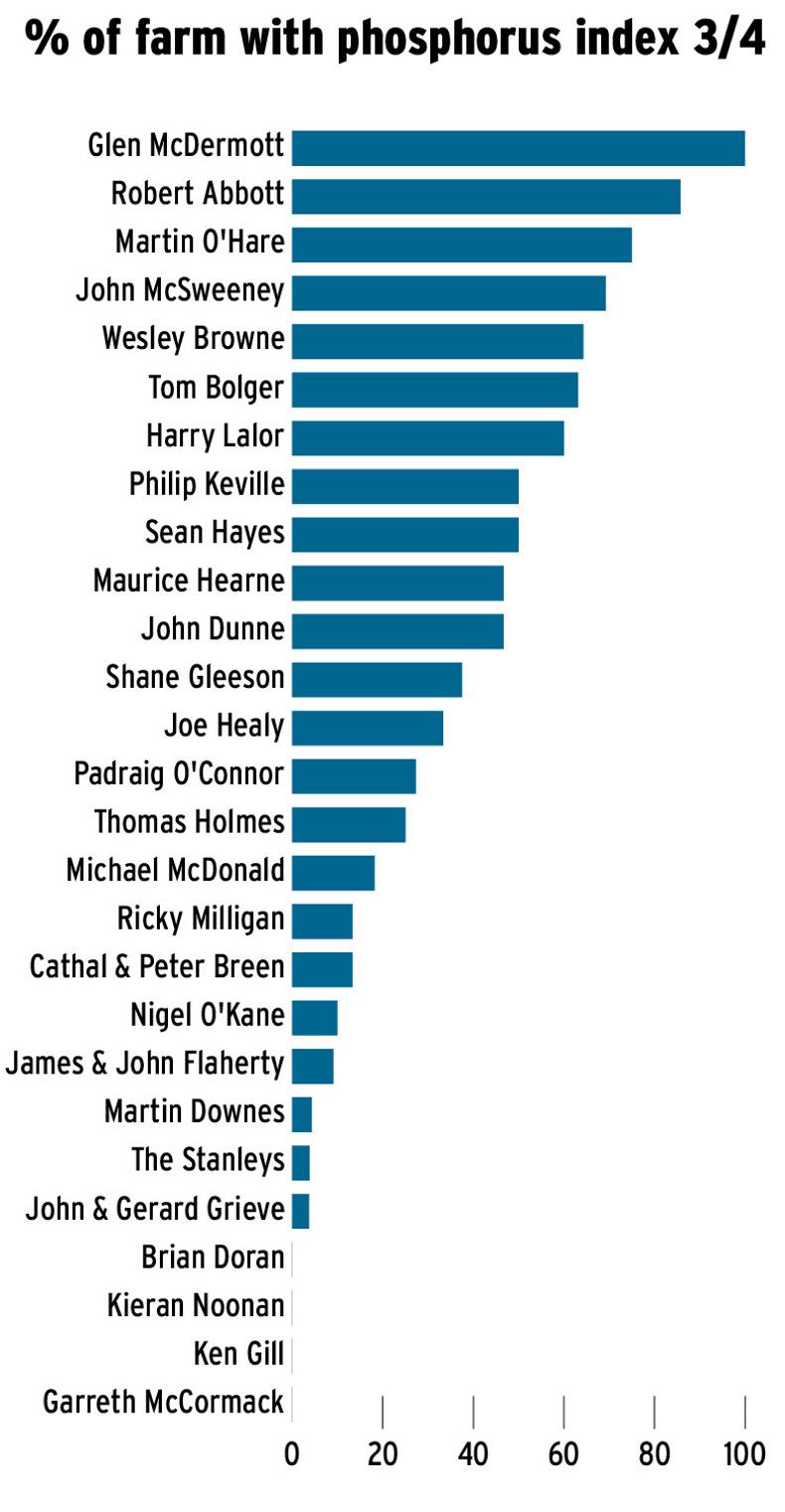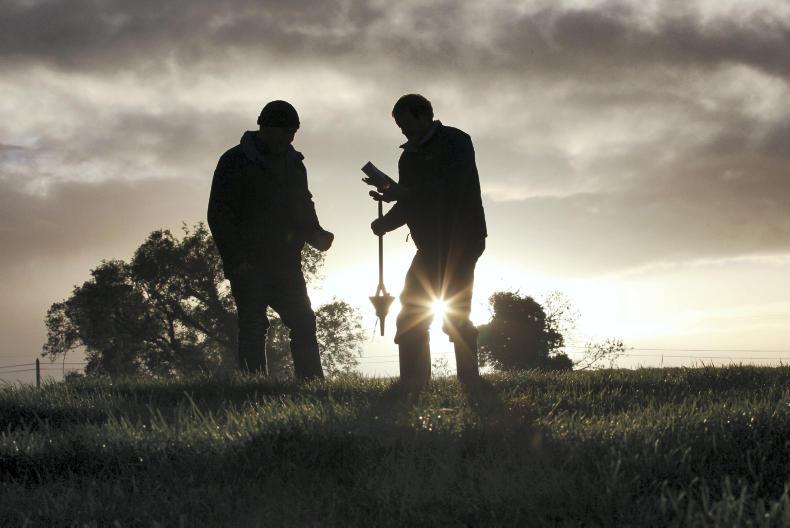The success of phases one and two of the BETTER farm programme has been achieved on the back of growing and utilising big volumes of grass. Soil fertility is the first and most important piece in the grass-growing puzzle and our previous BETTER farmers quickly learned that there were dividends to reap by optimising it. The phase three contingent will be no different.
Here, we present the results from samples taken on their farms at the turn of this year. These will form the basis of the phase three farmers’ fertiliser strategy in 2017, after which new samples will be taken.
At this point, the BETTER farm advisers have had multiple visits with their farmers and the first item for discussion on all holdings was acting on these soil results. If we are to set up a farm for big output from grass, all the paddocks, roadways and drinkers in the world won’t mask sub-optimal soil fertility. The reality is that trying to grow lots of grass on sub-fertile soils is akin to driving a car with the handbrake on. Lime (pH) and concentrations of phosphorus (P) and potassium (K) are the principle variables affecting soil fertility.
Correcting soil pH is the first thing on the list for our BETTER farmers. The principal factor driving down the pH of Irish soils is our rainfall – the water leaches away important mineral ions. A soil at optimum pH is much more efficient, both in terms of releasing natural reserves of nitrogen, P and K and likewise absorbing these nutrients, than a sub-optimal soil. There is potential for grasslands to release the equivalent extra nitrogen of a bag of urea/acre annually where pH is corrected.
Indeed, Teagasc work shows that correcting pH alone on soils with poor levels of P and K will still increase grass growth by 10%. Properly limed soils also have a better structure and are quicker to break down plant and animal residues.
On normal mineral soils, we target a minimum pH of 6.3, below which the soil will be more acidic. On peat type soils, the target is for a minimum of 5.5 – there are two farms with predominantly peat soils in the programme.
Some of our phase three farms also returned one or more soil tests with high Molybdenum (Mo) concentrations. Molybdenum ties up soil copper reserves at heightened levels. Given that copper plays a vital role in cow fertility, we need to curb the availability of Mo where possible. We do this by keeping soil pH below 6.2. The phase three BETTER farmers with high-Mo pockets on their farms will be keeping this in mind when designing a liming programme. As a rule of thumb, we reduce lime requirement by 5t/acre in high-Mo fields.
Phosphorus and potassium concentrations are measured in mg/litre and graded on a one to four scale based on the probability of a response to fertiliser application, with one being a definite response and four being no response. The target is for our fields to be at index three or four, which is a concentration of at least 5.1mg/l of P or 101mg/l of K (176mg/l of K on peat soils). Once we reach these levels via organic and artificial fertiliser applications, only maintenance spreading is needed in order to account for the offtake via animal products (meat) or conserved forage.
Meet the BETTER farm advisers
Analysis
Soil fertility varies hugely across our BETTER farms – there are some with a lot to do and some well on the way to unlocking their land’s potential. Average soil pH is a respectable 6.22, while P and K indices are just over 2 on average. In reality, the value of featuring at the top of one of the graphs (% optimum) on the facing page depends on where we lie on the others. It is only when all three variables are at their optimum that we hit full potential.
Only Louth’s Martin O’Hare, Laois’s Harry Lalor and Cork’s John McSweeney have consistently high proportions of their farms at optimum levels for lime, P and K. Yet even they have work to do. Later in the year we will allocate a number of challenges to each farmer, with one being the Soil Health Challenge. To pass this challenge, participants must have 70% of soils index three for P and K, or greater, and an average farm soil pH of 6.3 by year four (5.5 on peat soils).
Soil fertility on phase three BETTER farms



![]()
The success of phases one and two of the BETTER farm programme has been achieved on the back of growing and utilising big volumes of grass. Soil fertility is the first and most important piece in the grass-growing puzzle and our previous BETTER farmers quickly learned that there were dividends to reap by optimising it. The phase three contingent will be no different.
Here, we present the results from samples taken on their farms at the turn of this year. These will form the basis of the phase three farmers’ fertiliser strategy in 2017, after which new samples will be taken.
At this point, the BETTER farm advisers have had multiple visits with their farmers and the first item for discussion on all holdings was acting on these soil results. If we are to set up a farm for big output from grass, all the paddocks, roadways and drinkers in the world won’t mask sub-optimal soil fertility. The reality is that trying to grow lots of grass on sub-fertile soils is akin to driving a car with the handbrake on. Lime (pH) and concentrations of phosphorus (P) and potassium (K) are the principle variables affecting soil fertility.
Correcting soil pH is the first thing on the list for our BETTER farmers. The principal factor driving down the pH of Irish soils is our rainfall – the water leaches away important mineral ions. A soil at optimum pH is much more efficient, both in terms of releasing natural reserves of nitrogen, P and K and likewise absorbing these nutrients, than a sub-optimal soil. There is potential for grasslands to release the equivalent extra nitrogen of a bag of urea/acre annually where pH is corrected.
Indeed, Teagasc work shows that correcting pH alone on soils with poor levels of P and K will still increase grass growth by 10%. Properly limed soils also have a better structure and are quicker to break down plant and animal residues.
On normal mineral soils, we target a minimum pH of 6.3, below which the soil will be more acidic. On peat type soils, the target is for a minimum of 5.5 – there are two farms with predominantly peat soils in the programme.
Some of our phase three farms also returned one or more soil tests with high Molybdenum (Mo) concentrations. Molybdenum ties up soil copper reserves at heightened levels. Given that copper plays a vital role in cow fertility, we need to curb the availability of Mo where possible. We do this by keeping soil pH below 6.2. The phase three BETTER farmers with high-Mo pockets on their farms will be keeping this in mind when designing a liming programme. As a rule of thumb, we reduce lime requirement by 5t/acre in high-Mo fields.
Phosphorus and potassium concentrations are measured in mg/litre and graded on a one to four scale based on the probability of a response to fertiliser application, with one being a definite response and four being no response. The target is for our fields to be at index three or four, which is a concentration of at least 5.1mg/l of P or 101mg/l of K (176mg/l of K on peat soils). Once we reach these levels via organic and artificial fertiliser applications, only maintenance spreading is needed in order to account for the offtake via animal products (meat) or conserved forage.
Meet the BETTER farm advisers
Analysis
Soil fertility varies hugely across our BETTER farms – there are some with a lot to do and some well on the way to unlocking their land’s potential. Average soil pH is a respectable 6.22, while P and K indices are just over 2 on average. In reality, the value of featuring at the top of one of the graphs (% optimum) on the facing page depends on where we lie on the others. It is only when all three variables are at their optimum that we hit full potential.
Only Louth’s Martin O’Hare, Laois’s Harry Lalor and Cork’s John McSweeney have consistently high proportions of their farms at optimum levels for lime, P and K. Yet even they have work to do. Later in the year we will allocate a number of challenges to each farmer, with one being the Soil Health Challenge. To pass this challenge, participants must have 70% of soils index three for P and K, or greater, and an average farm soil pH of 6.3 by year four (5.5 on peat soils).
Soil fertility on phase three BETTER farms



![]()









 This is a subscriber-only article
This is a subscriber-only article














SHARING OPTIONS: